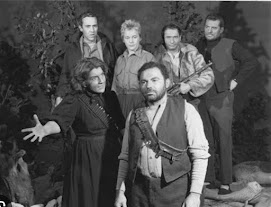Question 1:-From Whom the Bell Tolls critical analysis of the end of the novel.
For Whom the Bell Tolls was inspired by Hemingway's experiences as a foreign correspondent, first in Paris and then in Spain itself, during the Spanish Civil War. Hemingway visited Spain in 1931, just after the monarchy of Alfonso XIII had been overthrown. After several years of political conflict and civil unrest, elections were held in Spain. The resulting parliament was evenly divided between leftists and rightists, creating a very volatile political situation. It was then that Alfonso XIII voluntarily exiled himself and on April 13, 1931, the Republic was proclaimed.
Hemingway, observing these events, predicted that a civil war would erupt between the leftist and rightist political factions. He was correct, and when the Spanish Civil War began in 1936, Hemingway wrote articles and delivered speeches to raise money for the leftist, now called the Loyalist, cause. In 1937, Hemingway traveled to Spain to cover the war for the North American Newspaper Alliance. Only a few months after his arrival, Hemingway announced to the literary world that he was working on a new novel- its subject was the Spanish Civil War.
The fact that the protagonist of the novel, Robert Jordan, is an American is not unusual. The Spanish Civil War quickly became infiltrated by foreign intervention on both sides, and indeed has been likened to a "testing ground" for World War II, as the forces of Fascism and Communism pitted against one another. Many volunteers from democratic countries volunteered fought for the Loyalists against the Fascist army of Francisco Franco. The Russian General Golz who orders Robert Jordan to blow the bridge is also historically grounded. Russia sent "observers" and financial aid to help the leftist cause. The Fascist Monarchists had the support of Germany and Italy. As well as sending money and volunteers, these countries had the financial means to send weapons, vehicles, and supplies. To understand the context of For Whom the Bell Tolls, an important fact to remember is that it was a war between communism and fascism, an ideological and tactical practice for foreign volunteers. Also, it is important to remember that the communism of the Spanish Civil War strictly abolished religion, as this will be an important theme in For Whom the Bell Tolls.
By the spring of 1937, the time in which For Whom the Bell Tolls takes place, the Monarchist army had won their way up the Iberian peninsula and were besieging Madrid. The action in For Whom the Bell Tolls takes place in the woods surrounding the city of Segovia, which is a three hour journey from the capital. Although the Loyalists still retained control of the area, the Monarchists were slowly closing in. Over the next two years, a blockade prevented the Loyalists from receiving supplies and resistance in Loyalist villages began to crumble. The war lasted until March 28, 1939, when the better-armed Monarchists finally conquered Madrid.
A year after the war ended, in 1940, For Whom the Bell Tolls was published. The story of the American volunteer, Robert Jordan, is loosely based on Hemingway's own experience covering the war for the press. Hemingway intended that the novel reveal the realities behind "the good fight" of the Loyalists in the Spanish Civil War. According to the majority of critical receptions to the work, it seems Hemingway succeeded. After reading the preliminary manuscript, literary expert Maxwell Perkins told his friend that "If the function of a writer is to reveal reality, no one ever so completely performed it."
For Whom the Bell Tolls was hailed as Hemingway's finest work upon its publication, and is still considered by many critics to be his masterpiece. Specifically, the literary world hailed Hemingway's spare style and powerful symbolism. The love scenes between Jordan and Maria, the dramatic account of El Sordo's defeat, and the ironic commentary on the death of ideals created a novel of broad scope, with greater emotional power than his previous novels. Themes such as love and war had been narrated before, but never with such realistic and poignant prose as Hemingway crafted in For Whom the Bell Tolls. It is still celebrated not only as one of Hemingway's best, but also as one of the best war novels of all time.
Thank you 😊



No comments:
Post a Comment